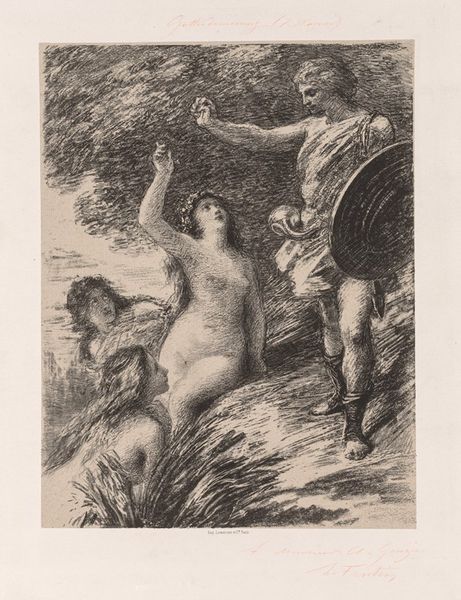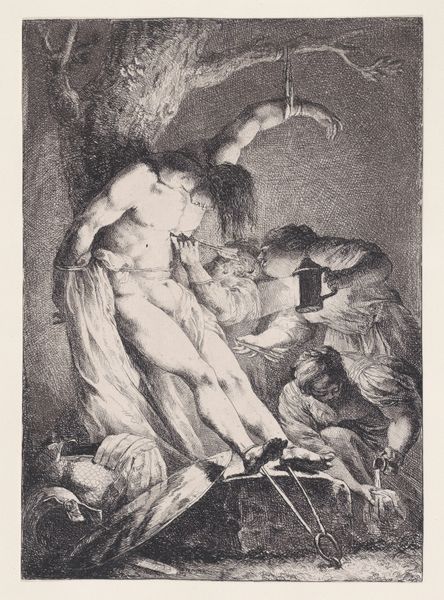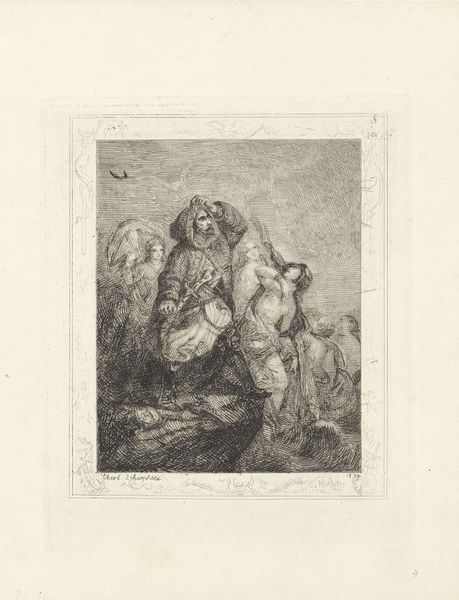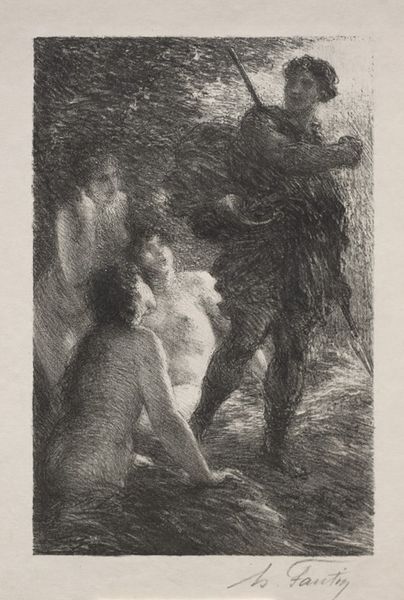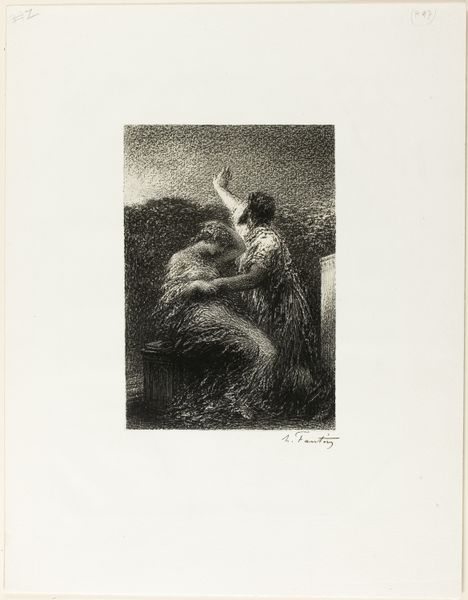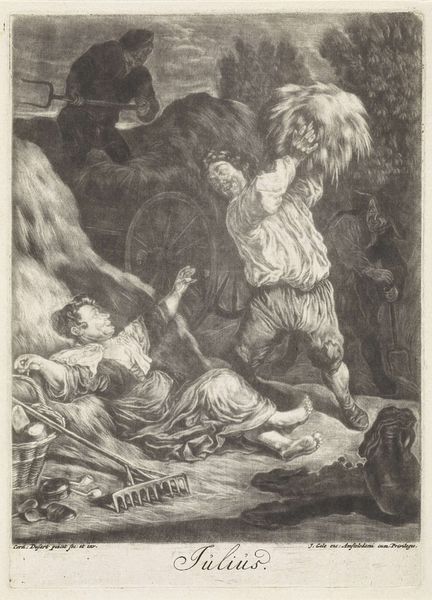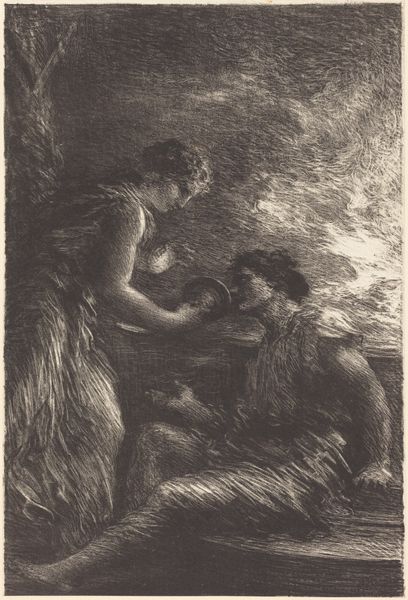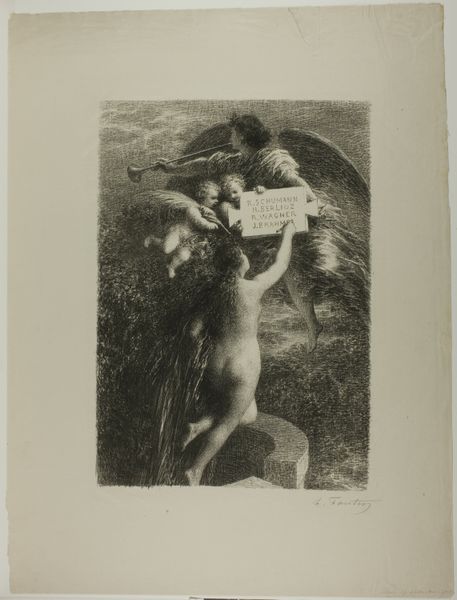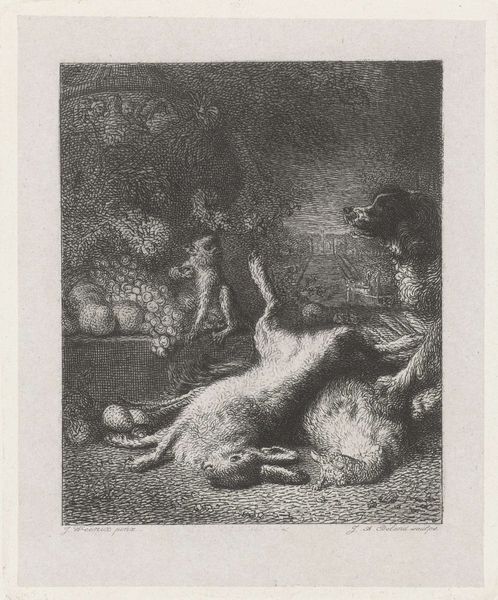
The Infancy of Christ: The Repose of the Holy Family 1888
0:00
0:00
Dimensions: 231 × 153 mm (image); 231 × 153 mm (primary support); 309 × 218 mm (secondary support)
Copyright: Public Domain
Editor: So, here we have Henri Fantin-Latour's "The Infancy of Christ: The Repose of the Holy Family," a lithograph from 1888. It's a pretty shadowy image, lots of dark tones. What I notice first is the angel figure sort of looming over Mary and the Christ child. How do you interpret this work? Curator: This piece invites us to consider the complex social and political context of the late 19th century, particularly surrounding religious representations and societal expectations of women. What do you make of the positioning of Mary, shrouded as she is? Is it devotional, or does it hint at something else? Editor: I see the piety in her pose, but also a kind of vulnerability, especially with the angels watching over them. It’s not just about divinity, but human fragility too. Curator: Precisely. Fantin-Latour was working within a society grappling with rapid industrialization and shifting power dynamics. By placing Mary in this protective but somewhat obscured pose, he seems to acknowledge both her sacred role and the societal pressures she would have faced. Notice the angel's action - almost a barrier? Editor: It’s like they’re not just venerating but actively guarding. Curator: Indeed. Perhaps guarding against a world where faith was increasingly questioned and traditional roles challenged. Think about the rising feminist movements of the time. This image, while seemingly traditional, might be subtly commenting on women's roles, protection, and the weight of societal expectations placed upon them, even the Virgin Mary. Does seeing it this way change your perception? Editor: It does! I was so focused on the religious aspect, I missed those layers. I see a lot more depth now. Curator: Art becomes powerful when it sparks those dialogues, when we actively place it in conversation with broader cultural forces.
Comments
No comments
Be the first to comment and join the conversation on the ultimate creative platform.
